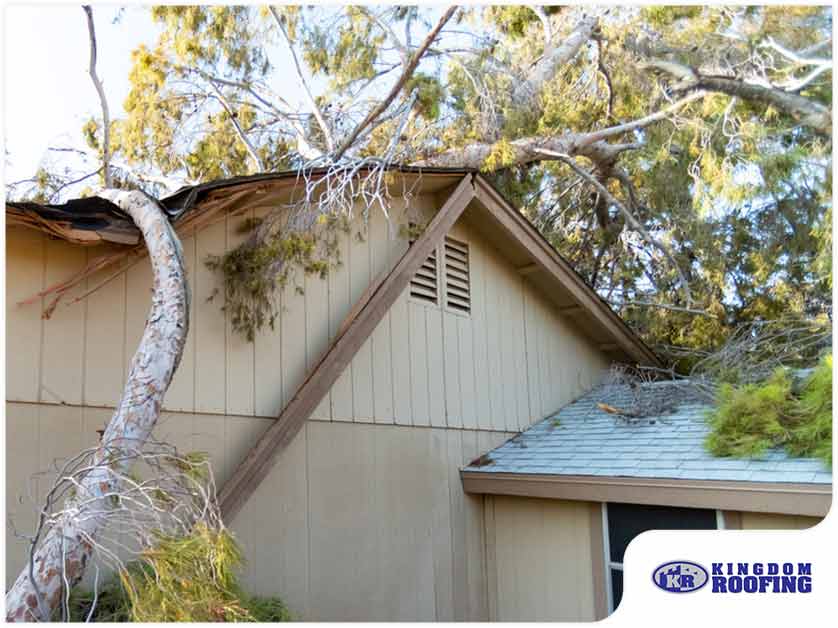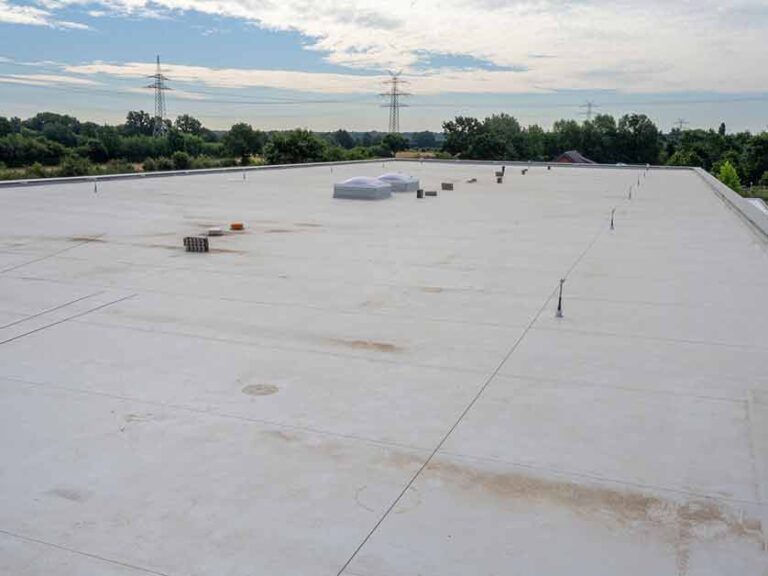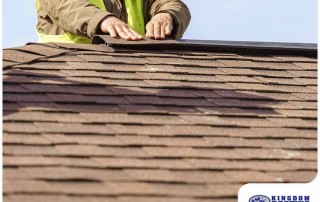Owning a home with a tree or two standing tall in your yard provides numerous benefits. In addition to the beauty they lend to your property, trees can also provide shade, which is a good thing to have if one part of your home is facing the sun. It is important to remember, however, that having trees around has its drawbacks.

Apart from the potential of the roots impacting your home’s foundations, their branches can grow extensively until they reach the surface of your roof. When that happens, expect some repercussions that, if not addressed, can affect its structural integrity and weather performance.
In this blog, local residential roof repair contractor [company_name] outlines how trees can damage your roof and home, and suggests preventive measures to ensure everything is intact.
The Adverse Effect of Trees on Your Property
Trees are essential to our environment, providing much-needed shade, aesthetic appeal and other resources. However, these natural elements can also cause significant issues for your roof and your home depending on their proximity to the structure. Here’s a closer look:
Tree Branches Coming Into Contact With the Roof
Your roof can be subjected to undue stress every time a nearby tree branch brushes against it during strong winds. If left unchecked, this situation could lead to shingle damage and possibly even punctures in the seams around vents or chimneys, requiring expensive repairs. The resulting friction can also dislodge the shingles’ protective granules, which can lower the roof’s UV protection.
Trees Branches Blocking the Gutters
A nearby tree branch may also impede the flow of water runoff toward the opening of the downspout. If not trimmed back immediately, water may spill out and collect near your home, causing foundation damage. The hefty weight of the branch also scrapes the gutter surfaces, leaving dents and punctures that can cause leaks. As it sways in the wind, the branch may also cause one of the gutter sections to sag until it detaches from the fascia board.
Tree Roots Damaging the Foundations
The roots of more giant trees planted too close to your home may penetrate underground pipelines, leading to surface moisture collection at your home’s foundation. What’s more concerning is when those tree roots embrace a home’s foundation, making way for cracked walls and settling floors to occur over time, thus representing costly repairing work that needs frequent upkeep.
Roof Stains Caused by Tree Saps
The sap released by certain species of trees can often land on rooftops, staining them with a discoloration that’s impossible to remove. Dampness from trees also causes mold growth. If you leave mold and stains as they are, they will be even more challenging to get rid of. Don’t rely on rainfall to wash them away since they can get stubborn to remove over time.
Leaves and Twigs Clogging Gutters
It’s crucial to watch for clogging debris such as twigs and leaves and ensure that taller trees don’t encroach close enough towards gutters so they run along instead of over them. Twigs and leaves can accumulate and clog up gutters rapidly due to the sheer amount of debris. As soon as the branches have been trimmed back, make sure to get rid of the leaves and other debris that have accumulated inside the gutters.
Termites and Other Pests Attracted to Trees
When large trees are planted close enough near a home, termite colonies may be attracted nearby, feeding off organic materials like damp leaves and fallen branches being washed by rain into constructed basements or rooftops with flat design configurations. Bacteria and fungi come along to grow within those trees as well for nutrients. Keeping an eye on any damaged bark that might open a path for termites onto your rooftop is essential in preventing costly repairs later.
Preventive Measures to Protect Your Roof
Taking preventive measures helps to keep the roof of your property safe from the potential damage that trees can cause. Here are some suggestions:
Trim Trees Regularly
Trimming trees regularly can prevent branches from hanging over your roof and gutters. It can also prevent branches from falling during storms and causing damage. Ideally, you’ll want to trim back overgrown branches until the branch tips are at least six to 10 feet away from the roof. This way, the branches can freely sway in the wind without touching the surface of your home’s exteriors. Be sure to hire an arborist for this job for your own protection and safety.
Keep Track of Your Trees’ Health
The healthier trees are, the less likely they are to cause damage to your property with its roots or falling branches. Make sure you check out any suspicious spots in their bark or stems, such as holes, decaying tissue, cavities, disease marks, etc. If possible, have an arborist inspect them just to make sure. They can give you expert advice on what to do to keep the trees in good condition.
Remove Debris Promptly
Roof debris is expected all year round, but that doesn’t mean you’d wait until all piles accumulate near your gutters. Invest in roof and gutter cleaning services to ensure the top part of your home looks pristine. Unless you are an expert in getting up the ladder and grabbing all of the dead leaves and muck inside the gutters, it’s best to leave that job to the professionals.
Plant Strategically
If you intend to plant a tree on your property, consider the potential of it growing taller over time and requiring pruning. If not pruned promptly and properly, it can grow laterally and reach the rooftop surfaces, which can endanger the structure. It’s essential to strategically plan the placement of the trees in the available ground spaces to avoid encroaching your roof and your home’s foundations. By keeping these points in mind during landscaping, you can prevent common issues that arise from trees growing too close to structures. It’s best to address these concerns before getting a contractor involved.
Work With a Reliable Roofing Company
Trees near or on your property can cause damage to your roof and home. Thinking ahead and taking preventive measures helps to avoid any potential damage. If you need residential roof repair and replacement services in Venice, Florida, [company_name] is the name to call.
Let our experienced roof team assess your roof and determine the best course of action to restore it to its previous condition. After dealing with the tree problem, we can fix damaged shingles or flashings so your roof can become weatherproof once again. To get started, give us a call today at (941) 217-2411, or fill out our contact form to request an estimate.



